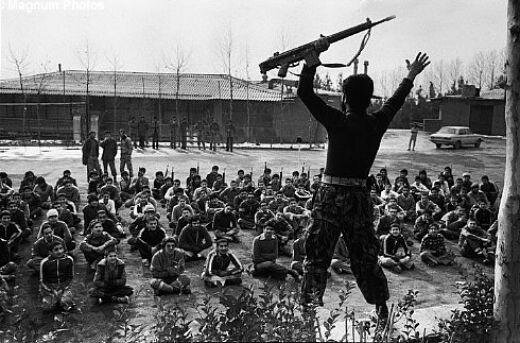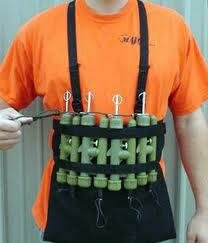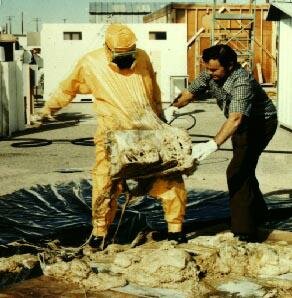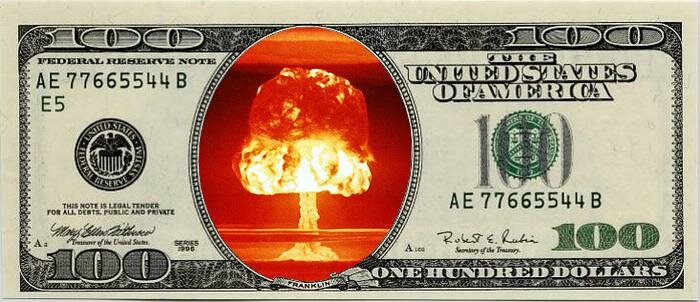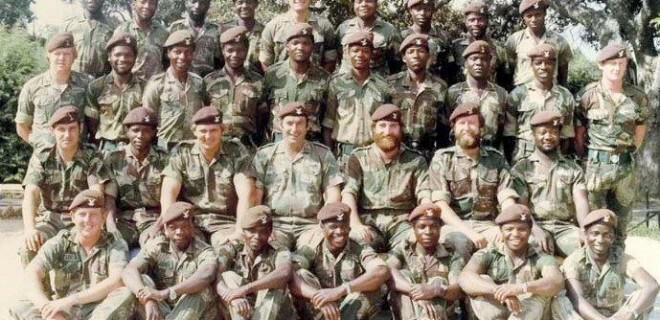Top 10 Unconventional Methods of Warfare
Suggested by SMSThere were times in history when war was a more conventional way of life than peace. These experiences established a form of warfare that appealed to the nobility and the shape of war became symmetric. Wars were fought between two armies on a battlefield. The armies were of similar size, the technology was of a comparable standard and the ground wasn’t just strewn with dead, but in some cases it was layered with bodies. But in circumstances that were more asymmetrical, more unconventional methods of warfare were employed. Following is the top ten such methods in order building to the most effective.
10. Guerilla
The concept of conventional warfare often rests on the idea of two armies facing each other on a battlefield. Although these armies may be of significantly different size and skill level, they fought with tactics that could resemble a chess game and operated with a sense of honor and pride. But in the event of a much bigger and stronger force, tactics that go back more than two thousand years could be employed successfully. These “little war” or guerilla strategies involved fighting little wars or battles at the edges of the larger army, weakening it through attrition and frustration. A good example of guerilla warfare was that of the National Liberation Front (NLF) of Vietnam during the war with South Vietnamese Forces and then allied forces led by the United States of America. The first important understanding of NLF was that peasants of South Vietnam were “the sea in which the guerrillas needed to swim” (Mao Zedong) and without the support of the peasants the NLF would fail. Where soldiers of conventional warfare, well-illustrated in the Crusades, would take a huge toll on the villages and towns that they moved through, the NLF was very careful to maintain a good relationship with the locals. They would avoid taking or buying the property or crops of the peasants and provided support to them in chores and work. With this support, the guerillas of the NLF were able to make the Vietnam War a long and painfully drawn out conflict. They wore down the opposition by only fighting battles where they outnumbered their enemy or where they could strike and retreat without having to face a larger force. These maneuvers allowed the guerillas to wear down their foes and eventually overpower them and only engage in conventional warfare when the enemy was so weakened by the ordeal that the guerrillas had superior numbers and more motivated forces.
9. Suicide Bombings
The idea of someone courageously laying down their life for the cause or for their companions has always aroused descriptions like “martyr” or “hero”, but the arrival of the suicide bomber shed a whole new light on the concept. Whether through being convinced by a radical leader or as an act of cultural or religious significance, the notion of someone blowing themselves up in a place where the explosion could cause the most damage is unconventional to say the least. There have been such fanatics in the past; the Japanese Kamikaze pilots of World War II were frightening to the Allied Forces, not simply because they caused such damage, but also because this degree of dedication was hard for many soldiers to comprehend. The Kamikaze flyers would accept the role of being a flying bomb and would deliberately fly their plane into sensitive parts of ships to reduce their battle effectiveness and, in turn, to sink them. But more recently, the radical bomber has taken on the role of terrorist and they have caused carnage and fear throughout much of the world. With huge quantities of explosives strapped to them, the suicide bomber is usually dressed in a non-descript clothes and blends in well with the crowd. They move to selected sites and nonchalantly detonate a bomb that can kill dozens of innocent people, as well as themselves.
Regardless of their motives, the mayhem caused or the reward of the martyr, suicide bombers are soldiers in a war that will probably never be fought conventionally.
8. Trojan horse
The capacity for creative and unconventional methods of warfare isn’t something isolated to the last century or so. In fact, in 1200 B.C.E., Odysseus came up with a cunning and new twist on the idea of “killing with kindness”. After nine years of war against Troy over the abduction of Helen from Sparta, the Greeks had grown tired and were looking for a way to end the siege. Odysseus contrived a plot that became legend. The Greeks constructed a huge wooden horse and then, overnight, they departed completely. The only remaining sign of an army that had camped outside the city of Troy for years was the gift of the wooden horse left at the gates of the city. In the morning the Trojans, overjoyed at the departure of the Greeks, dragged the horse inside the gates and began celebrating. The festivities continued into the night, but when the revelers had fallen asleep, the gift of the Greeks showed its inner beauty. A band of Greek soldiers, hidden in the horse, climbed out, opened the gates that had held their army at bay for nine years and allowed the Greek, which had since returned, enter, conquer and raze Troy. While this story has been told many times, the ingenuity of Odysseus and the Greeks in the plan was unconventional and undoubtedly effective.
7. Sticky Foam
Among the ingenious and fantastical tactics and toys of the United States military, Sticky Foam is one of the most intriguing and the most disappointing. Created as a form of nonlethal weapon, the Sticky Foam was developed to be squirted at the enemy, expand on contact and harden quickly, effectively “freezing” them where they stand. Ideally, the attackers would not be hurt and the confrontation could be resolved without risking the life of the U.S. soldiers. The Sticky Foam could be stored and transported in small bottles and promised to be a revolutionary “weapon” in modern warfare. However, at its first outing the Sticky Foam fell short of expectations. Faced with rioters while distributing food in Somalia, the Sticky Foam was misused and sprayed in front of the crowd rather than at it. The foam did exactly what was intended; it expanded on contact with the earth and hardened. But, rather than arresting the progress of the rioters, it produced a simple wall that they climbed over and then continued rioting. When used on a smaller scale to subdue prisoners in a jail cell, the foam successfully bound the man and quelled any potential violence. Sadly, the effects were again ill-considered and the prisoner could not be removed from the cell or dealt with in any worthwhile manner. There would be few methods of warfare more unconventional than Sticky Foam and, although its application was less positive than hoped, the intention of providing soldiers with nonlethal options in warfare must be applauded.
6.Mind power
Although it was hidden behind layers of denial and deflection, and may still be, there are a number of tales that discuss the use of psychic power as a component in the armory of United States super soldiers. In some arenas it was seen as means of extracting information without the need for interrogation, but there were those who hoped to cause physical harm without having to make tangible contact. In his book, “The Men Who Stare At Goats”, Jon Ronson described a project called Goat Lab, where a handful of psychic specialists worked tirelessly to kill a goat simply by stopping its heart with mind power. This would seem a little silly, but Ronson found that one member of the team had been successful and had “dropped a goat”. When pursued further on this feat, the man was found to regularly “drop” hamsters as well. But, despite the potential of this effort, the exertion required to “drop” a person is still well beyond the grasp of modern super soldiers. Furthermore, the perpetrator also suffered severe psychological effects as he realized that the goat was completely innocent and didn’t deserve to die. The use of psychic power in warfare must be acknowledged as an unconventional and slightly bizarre form of warfare. But the reality remains that with a raised consciousness and plenty of practice, this could be the basis of military action in the future.
5. Economic Warfare
It could be a product of evolution that we are becoming more sophisticated and leaving the world dependent on military strength behind us. Or perhaps it’s an admission by the rest of the world that the military superiority of the United States is such that even an alliance of major military powers would not be able to overcome America. Whatever the basis of the shift, there has been a significant move of late away from soldiers and guns to bankers and balance sheets. For a long time the use of economics means to influence the political directions of an enemy country has been a viable practice. But only recently has it become a method of warfare that has taken the attention of the senior military officials as seriously as it has that of economists and treasury advisors. The weapons of such a form of warfare include blockades, embargoes and withdrawal of exports to the enemy state. In the longer term, there are also strategies that reduce the income of a nation and manipulate currency value. These acts can be as devastating as any raid or missile strike and can play a role in reducing the supply and support for soldiers in the field. In 2009, the United States established a war game that took place entirely indoors and via computer. Not a shot was fired, but the damage to hypothetical nations and regions such as China, Russia, countries of the Pacific Rim and, of course, America herself was frightening. Working to cause maximum damage to the economy of the enemy, the result sent shockwaves through the military structures of the U.S., especially as the victor in the exercise was China. With a population of more than 1.3 billion, approximately one fifth of the entire world, China has markets opening that could produce extreme wealth or abject poverty to numerous rival nations. Having also focused on buying up U.S. government debt, China is positioning herself to be a major player in a war that relies on money rather than munitions.
4. Selous Scouts
As unconventional as guerilla warfare and terrorism can be, the work of the Selous Scouts in the arena of antiterrorism and anti-insurgence crossed amazing boundaries. They were the product of a collection of Special Forces and intelligence organizations working in and around Rhodesia and they carried the role of tracking terrorists. However, they also worked as a pseudo-terrorist group and bolstered their numbers with turned terrorists and a number of colored soldiers from the Rhodesian African Rifles. Through such connections, the Scouts were able to infiltrate groups by impersonating terrorists and gaining the confidence of the operatives. Once within the group, the Selous Scouts would carry out extraordinary acts of sabotage and surprise often destroying the terrorist cell from the inside. These activities included drawing terrorists into ambushes, collecting intelligence on terrorist groups and assassinating terrorists from within their own structures. A particularly favorite operation was to have Black Scouts, posing as terrorists, escort highly-prized white prisoners into a terrorist stronghold. When they had established their credentials as captors and captives the Selous Scouts would then open fire and destroy as many of the terrorists as was possible before escaping. At Nyadzonya Pungwe in August 1976, eighty-four Scouts were able to penetrate the Zanla terrorist camp where thousands of terrorists were based. Without warning the Scouts opened fire with an array of weaponry and killed as many as a thousand terrorists at a cost of five wounded Scouts. Along with the tactics of the Selous Scouts the selection process and training of the members was unorthodox, but extremely effective. While they were not the only group in history to work in such a way, they are a brilliant example of highly trained fighters operating in an unconventional, yet highly successful manner to battle terrorism.
3. Crazy Behavior
There are members of the community who would consider any warfare a result or act of crazy behavior. Yet there are military strategists who will recognize that crazy behavior is an unconventional, but effective tactic in the course of battle. Aside from the new and unusual weapons that he brought to the battlefield, in 219 B.C.E. Hannibal employed a technique of irregular and apparently disorganized maneuvers on one side of the Trebia River. The Romans, dismayed by the pathetic military structures and shaking their heads in disbelief at the woeful foe they were to confront, were drawn across the river and on to the territory Hannibal needed. He then unleashed his elephants and a highly disciplined army to decimate the Romans. This approach isn’t unique to Hannibal as a band of warriors, the Wendigokan, who were part of the Ojibwa tribe, engaged a similar principle. Among other bizarre behavior, the Wendigokan would deliberately yell instructions and proclamations that were exactly opposite to their intentions. This brought about great confusion in their foes and alarmed them so that they avoided conflict with the Ojibwa. Interestingly, the same tactics moved from the realm of mortal battle into the ring of pugilistic confrontation, especially demonstrated by the great Muhammad Ali. In 1962, then Cassius Clay behaved so outrageously in his challenge of Sonny Liston, that when his fighting technique followed similar eccentricities, the Heavyweight Champion was at a loss and did not know what to expect. Clay won this bout when Liston declined to answer to the bell at the start of the seventh round. While there are many examples of people behaving unusually in warfare solely through fear or confusion, the strategy that exploits the impact of crazy and unpredictable behavior in an unconventional, but highly effective, one.
2. Political Warfare
Against the backdrop of conventional symmetric war, the place of Political Warfare is often difficult to recognize and even harder to understand. Ranging from the use of diplomacy to influence potential allies to the blatant lies and deceptions of propaganda this method of warfare operates without the use of firearms or fury and achieves its goals subtly. While the use of diplomacy to enlist the support of ally nations has been a natural and longstanding aspect of warfare, its role in the less obvious context of convincing others not fight is equally significant. When the German ambassador shared a meal with Winston Churchill, the then Minister for the Navy, immediately before the beginning of World War I, he asked if England would be able to stay out of a conflict where Germany attacked France. Churchill has since expressed his disappointment at not being able to acquiesce to the request, but the profound effect of a quiet discussion between gentlemen could have echoed throughout Europe and the world for decades after. Similarly, the art of propaganda has been refined and developed until the ability to manipulate the hopes, dreams and fears of its victims is almost a science. The spreading of false information and the sowing of seeds of doubt has always been a tactic that has worked against the insecure. But, the use of propaganda to support a war movement by playing on the sympathies and sensitivities of the public can result in the enlisting of the aid of a whole nation in the “War Effort”. The use of political means in the context of warfare is a more sophisticated method of resolving disputes, although it is rarely one that can be employed without some risk of harm, even if that is only to the confidence of a people in their government.
1. Terrorism
Beyond instances of suicide bombings, the broader realm of terrorism is one of the most commonly recognized forms of unconventional warfare. With similarities to guerilla warfare in that it provides an opportunity for a grossly outnumbered militia to enter into conflict with a force superior in size and technology. As is suggested by the name of this method of warfare, it employs terror as its central currency. The more this behavior can intimidate and unsettle the non-military public, the greater is the potential to coerce a community into changing attitudes and conduct. To achieve this, terrorist groups can employ a range of techniques including kidnapping, assassination and arson. These acts often have a specific target and, while unsettling, have a lesser impact on the general population. However, in cases such as the murder of Lord Louis Mountbatten in 1979, which evoked a significant amount of public feeling, the act of the terrorists may have unified the public against the perpetrators, effectively working against the assassins. More general terrorist undertakings, like bomb threats and hijackings, have a greater impact on the man in the street. The random nature of the victims damages the confidence of the community. Public opinion can then press the government to consider negotiation and conciliation. It then takes strong and determined leadership to withstand the political pressure. Even though the physical danger is imperative and ever present in the application of terrorism, its greatest effectiveness is in the uncertainty and insecurity that permeates the community in its aim.
